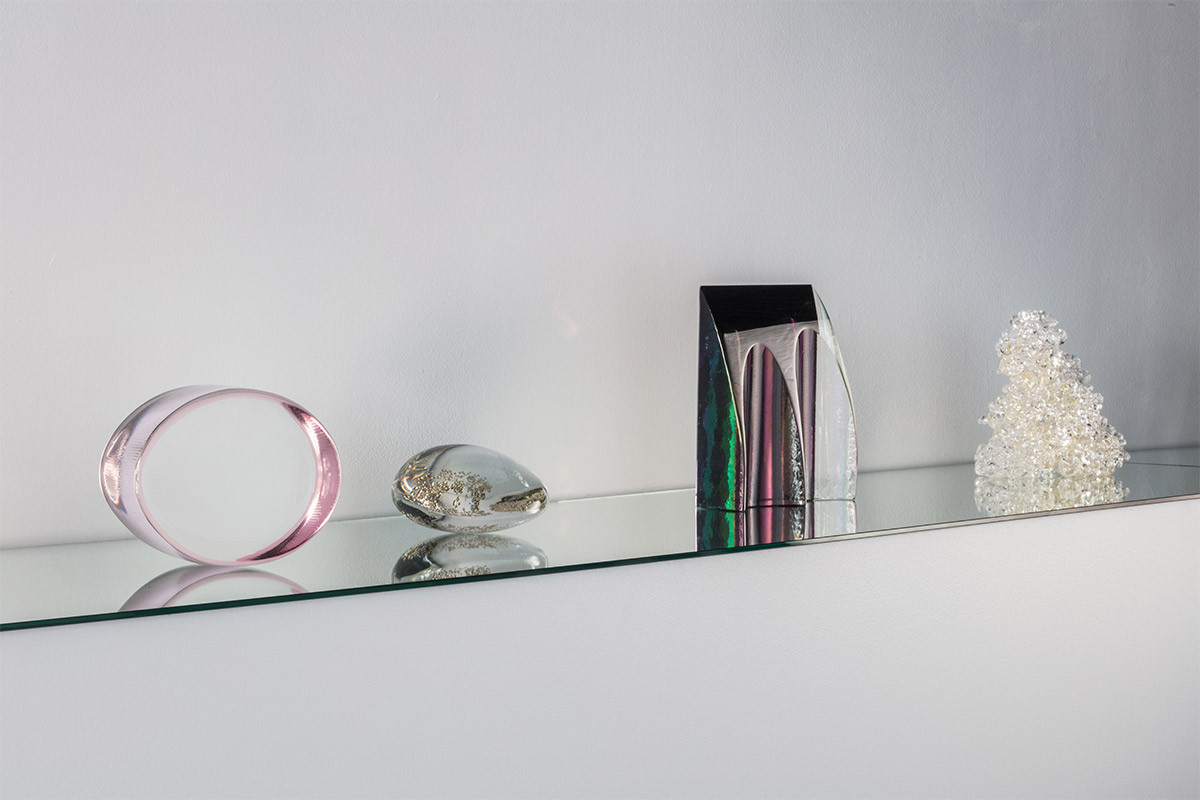
Interview with John Hogan
Like magnificent treasures from another dimension, John Hogan’s breathtaking glass sculptures seem to fall to earth with a combination of technical virtuosity and wild imagination. Unlike many of his contemporaries, the artist works in a variety of processes, constantly pushing the boundaries of form, color and texture.
We sat down with the artist in New York, as he prepared to debut his Ripple and Reflect coffee tables, his first ever furniture pieces.
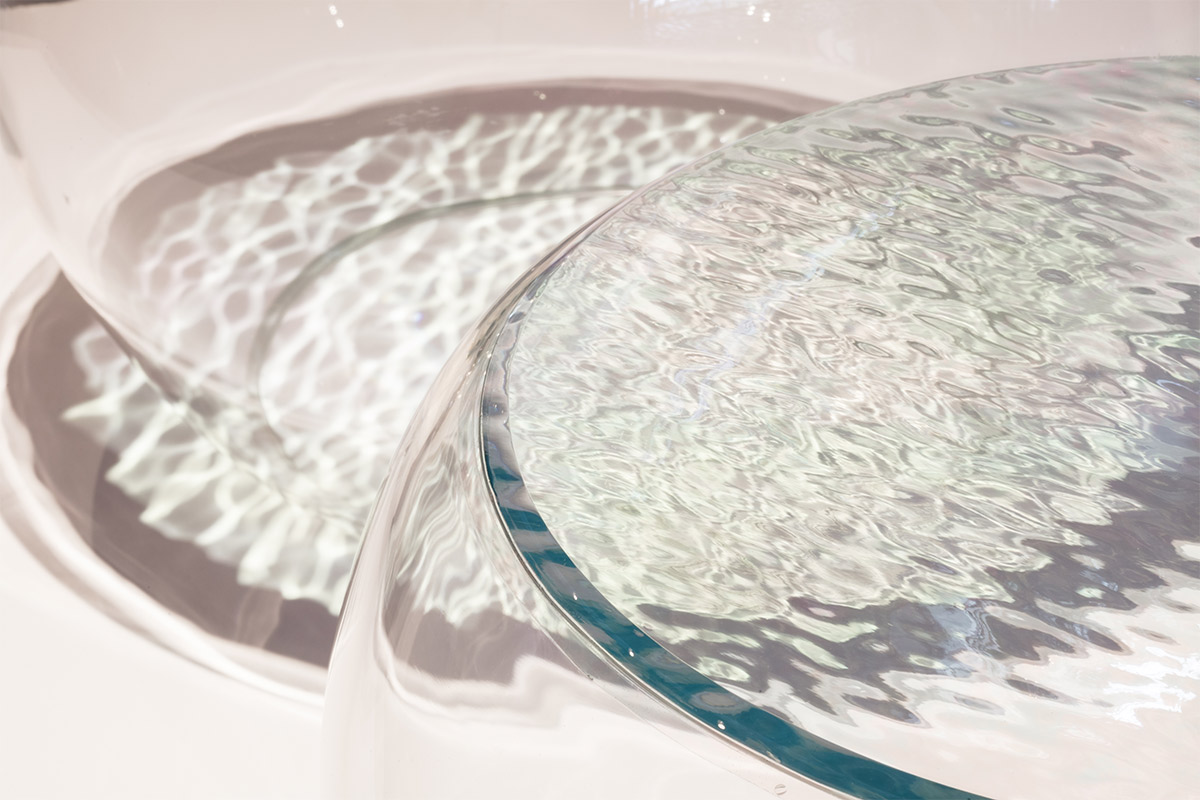
Photography by Lauren Coleman.
Talk us through your creative process. How do you come up with these resplendent forms?
Experimentation is the core of my work. I work with various systems and document my process. This was of working was inspired by a book I read by the Spanish chef Ferran Adrià, who was one of the first to popularize molecular gastronomy. The process is to just try everything and put it on the table. Documentation is really important, because maybe something initially doesn’t seem promising, but later you’ll realize it’s a stepping stone to somewhere else.
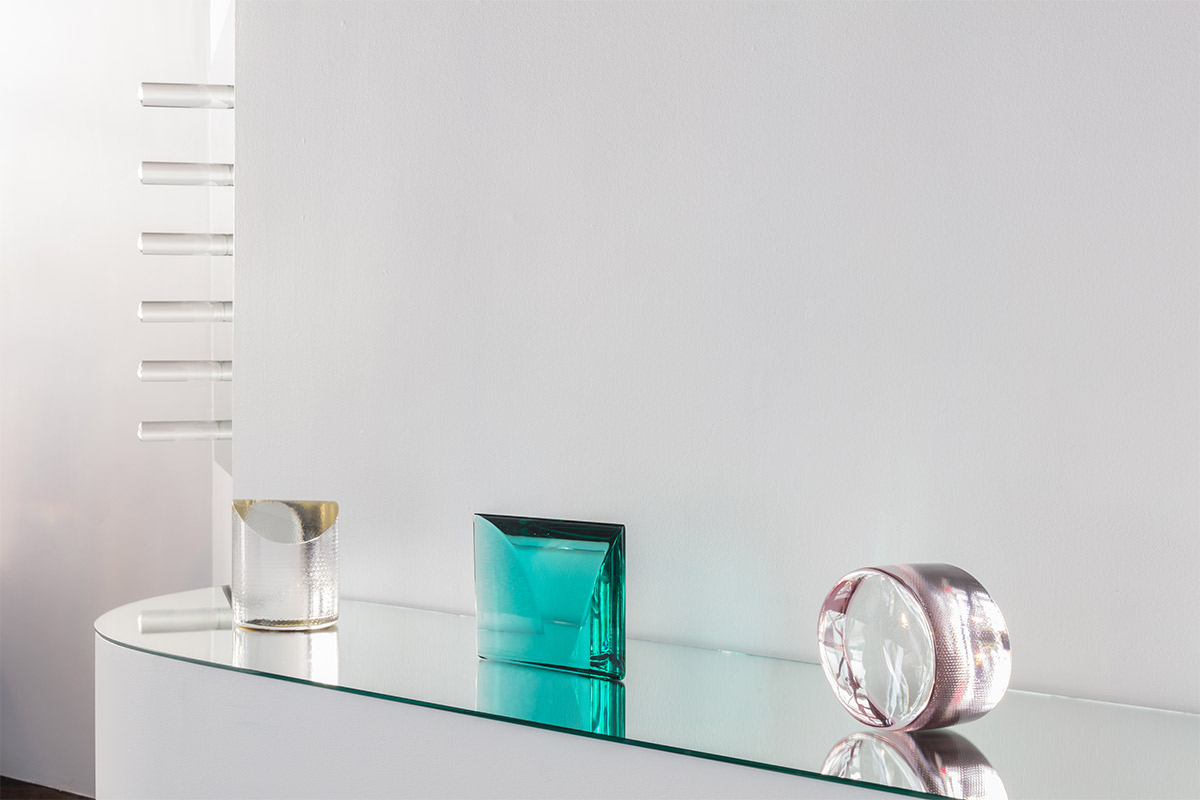
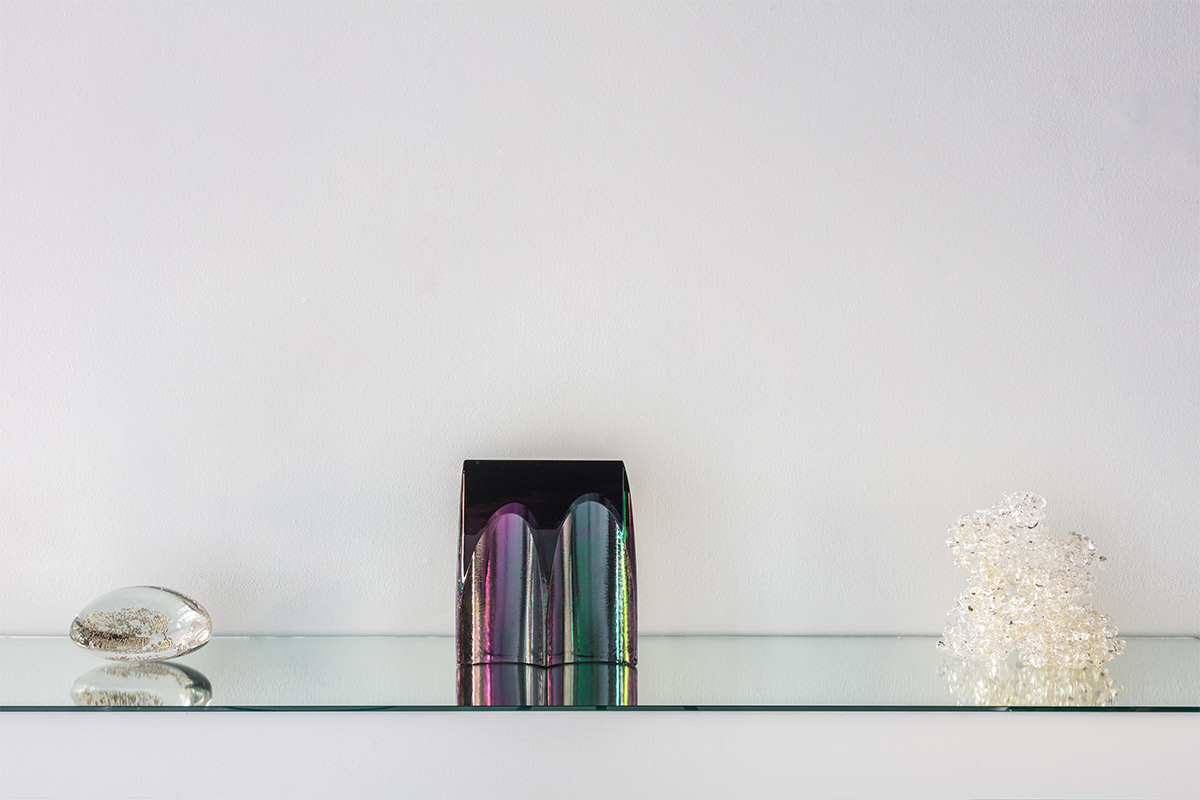
Photography by Lauren Coleman.
Your glass pieces adhere to a certain scale. Can you explain why you like to work with these proportions?
This is certainly the scale I’m most comfortable working at. I feel it allows people to understand the work and it’s not too demanding of their space. I like small things that make you imagine them enlarged to an architectural scale.
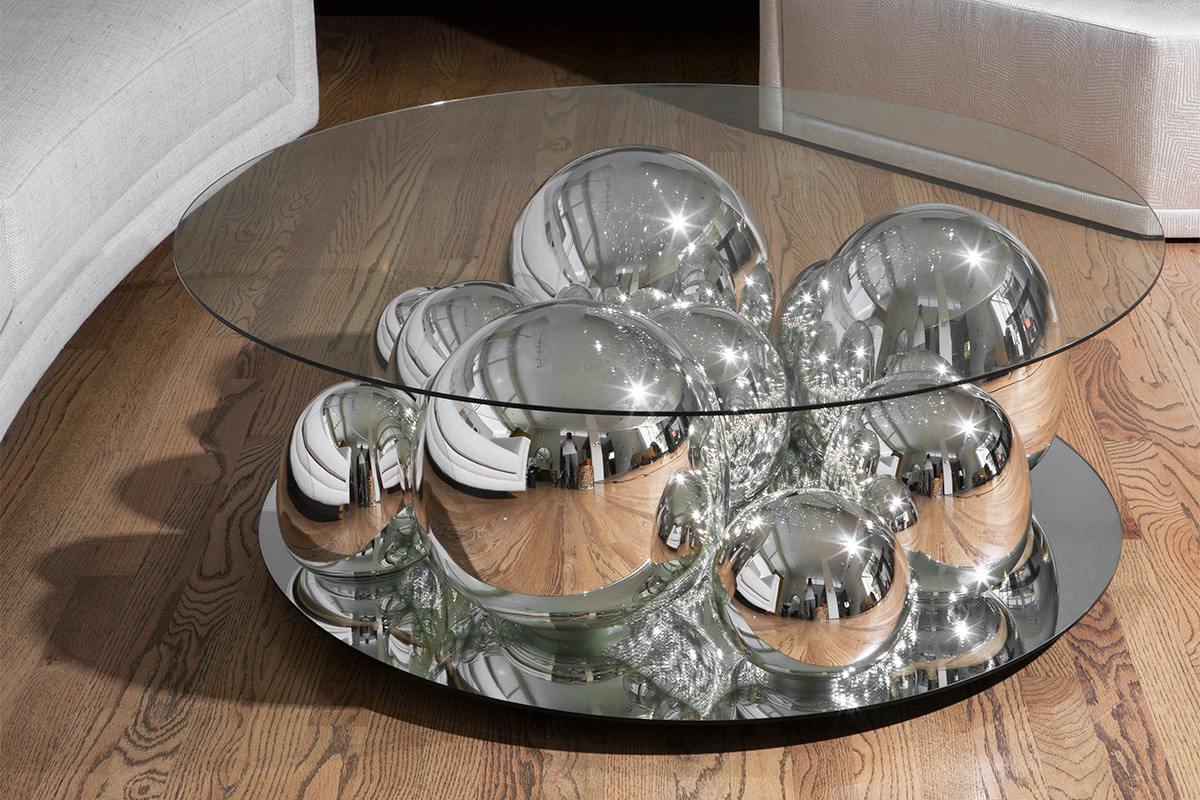
Photography by Charlie Shuck.
Can you tell us about the genesis of the coffee tables, your first furniture pieces?
Up until David (owner of The Future Perfect) challenged me to make furniture, I wasn’t really that interested to be honest - it really was a curveball. I originally thought that if I’m going to be designing furniture it needs to be very different from my artwork. It turned out to be a great process.
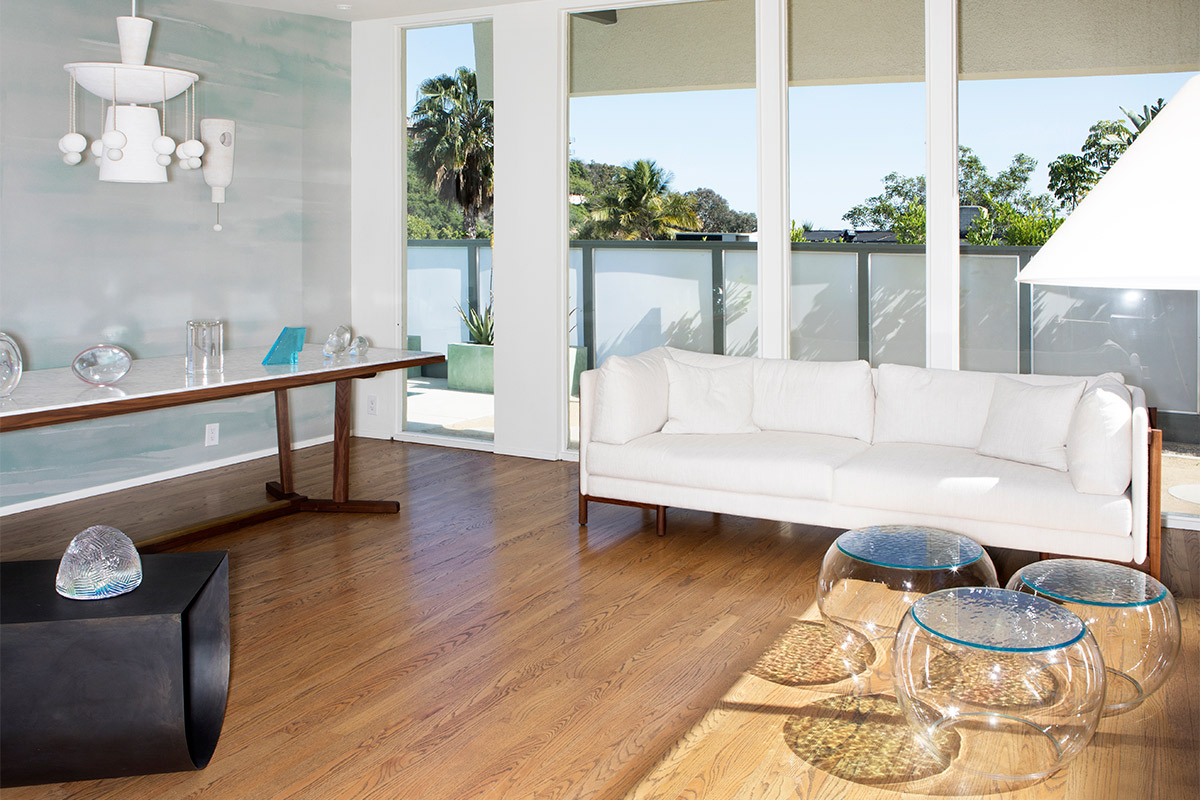
Photography by Charlie Shuck.
The pieces almost seem too delicate for function, what were the challenges in creating them?
Just the scale of the blown glass was a huge challenge. Seattle is one of the only places in the world where you can have glass blown to that size. But it’s definitely interesting working in different scales; I’m currently working with Moss architecture on a 16-foot tower for the Chicago Architectural Biennial.

Photography by Charlie Shuck.
How was your experience growing up in Toledo, a globally known center of glass?
I grew up next to a mom and pop glassblowing studio. And from the age of six I knew I wanted to blow glass with them. Eventually I applied to to the Toledo Museum of art - I convinced them to let me in at 15 when I believe you had to be 18. The Studio Glass Movement was born in Toledo 50 years ago (when people started making art with glass). I feel what I am attempting to do is very much an extension of that tradition.
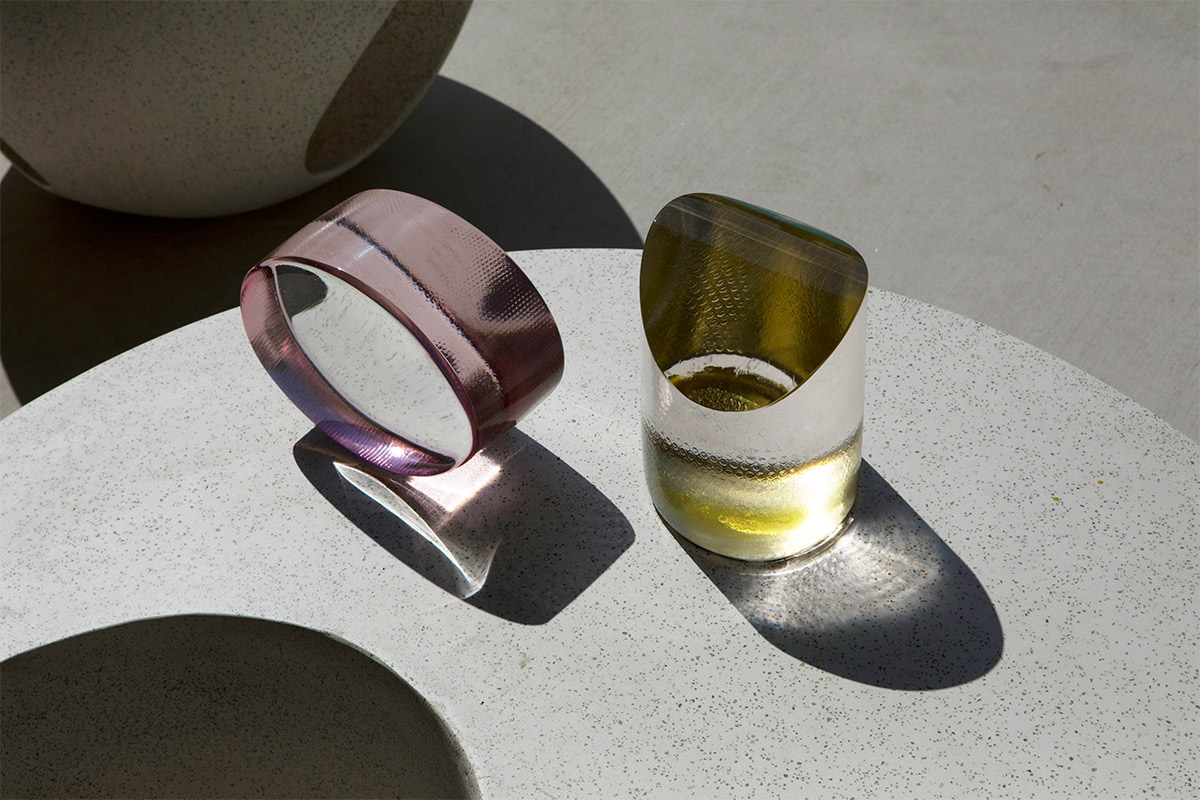
Photography by Charlie Shuck.
What else can we expect from future work?
I’ve been looking into the physics of what’s happening with the process - you are literally changing energy - it’s called radiant energy. Also exploring color and the way that can affect each person differently. I’m trying to make work that will physically impact people. I’m also trying to work with more reclaimed materials.
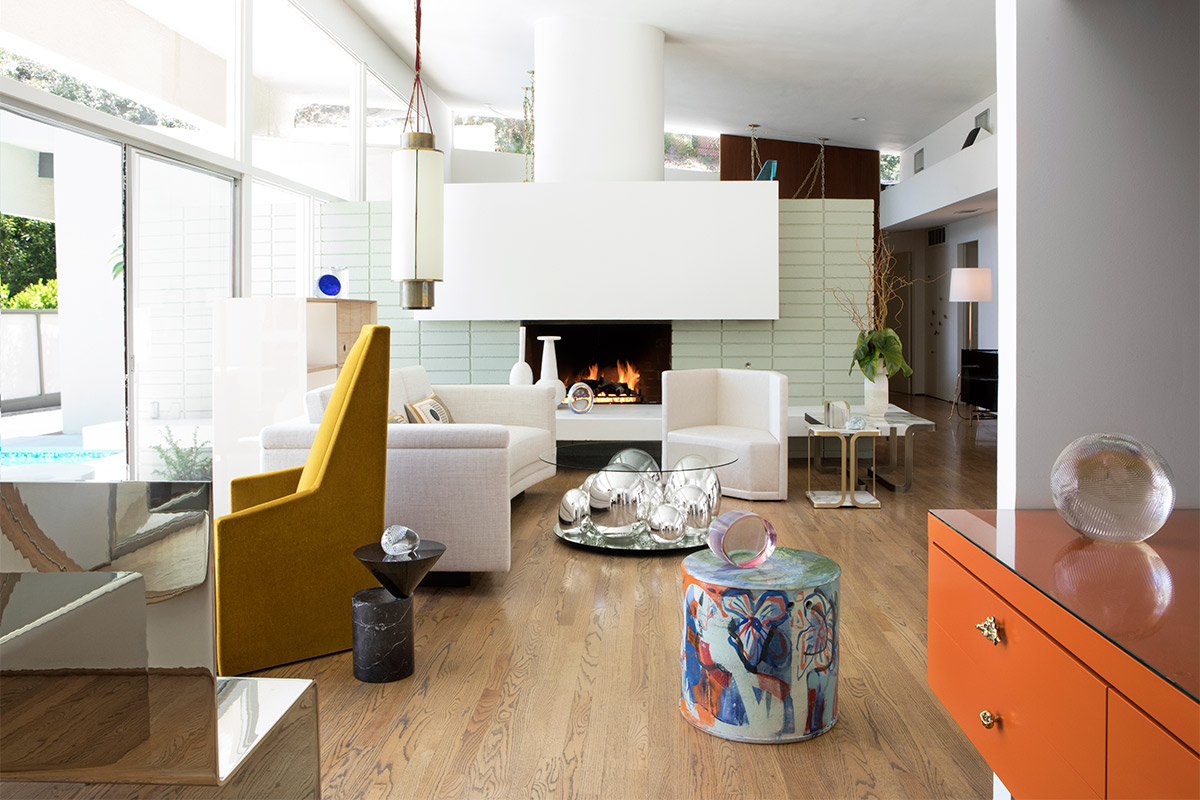
Photography by Charlie Shuck.
 The Future Perfect
The Future Perfect